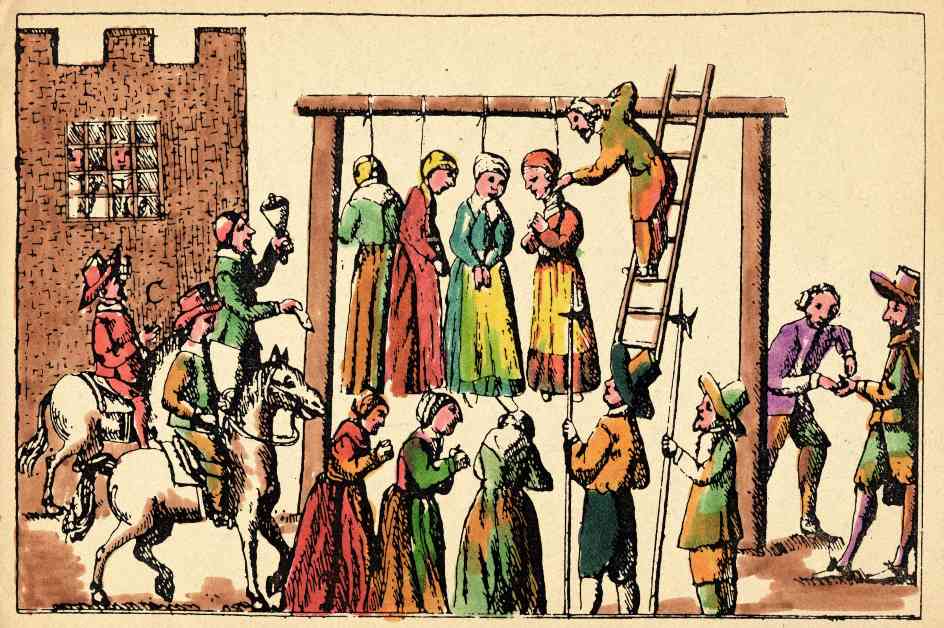Scotland’s History of Witch Trials Immortalized in New Tartan Collection
In 2020, Claire Mitchell KC embarked on a mission unlike any other: advocating for a memorial to commemorate the thousands of individuals, predominantly women, who faced trials and execution in Scotland during the 16th to 18th centuries under accusations of sorcery. Alongside fellow campaigner Zoe Venditozzi, Mitchell initially sought inspiration from physical monuments such as the Salem Witch Trials Memorial in Massachusetts or Louise Bourgeois’ striking installation near Vardø, Norway.
However, faced with a lack of funding from the Scottish government and a lack of agreement on a suitable monument location, they devised a unique solution: a Witches of Scotland tartan that would honor the memory of those persecuted in what stands as one of the country’s most significant miscarriages of justice.
A Gothic-inspired blend of black, grey, pink, and red hues, the final tartan design recently earned its place on the Scottish Register of Tartans. The response has been nothing short of overwhelming, with inquiries pouring in from across the globe as eager customers await the collection’s release.
Reflecting on the birth of this innovative idea, Mitchell recalled a pivotal moment at the V&A Dundee’s Tartan exhibition. Surrounded by individuals flaunting their kilts, each boasting a unique design and tale, she envisioned a living memorial encapsulated in a tartan. This spark of inspiration led her to Leonie Bell, the director of V&A Dundee, who connected her with Clare Campbell, the visionary behind the Highland’s sole tartan mill, Prickly Thistle.
Campbell, having left the world of chartered accountancy to establish Prickly Thistle, is an advocate for protecting “Highland tartan” through legislation akin to the Harris Tweed Act of 1993. Her commitment extends to fostering a community enterprise in Fort George, a locale historically tied to the suppression of Jacobite movements.
Every element of the Witches of Scotland tartan bears significance to the witchcraft trials. With red symbolizing the women’s blood, grey representing the ashes of their burning, and pink embodying the tape used in legal documents, each thread weaves a poignant narrative. The numerical intricacies within the design further underscore the gravity of the Witchcraft Act’s impact.
Prickly Thistle, known for crafting bespoke tartans for diverse clients, including notable figures like occultist Aleister Crowley and actors Alan Cumming and Miriam Margolyes, approached the Witches of Scotland project with a fervor for capturing the essence of the historic injustices. Campbell emphasized the emotional connection to the cause, reflecting on her own outspoken nature and acknowledging the potential vulnerability she may have faced in similar circumstances.
The Witches of Scotland tartan stands as a beacon of remembrance, featuring three distinct stripes that echo the campaign’s core objectives: an acknowledgment of past wrongs, exoneration for those unjustly accused, and a lasting tribute. While an official apology from Nicola Sturgeon marked a pivotal milestone in addressing historical injustices, efforts for a formal pardon remain ongoing.
Mitchell and Venditozzi have channeled their dedication into various initiatives, from producing the Witches of Scotland podcast to penning a book titled “How To Kill A Witch: A Guide for the Patriarchy.” With plans to unveil the tartan at a launch event in May, they aim to donate a portion of sales to charitable causes, further amplifying the impact of their advocacy.
Beyond Scotland’s borders, the resonance of the tartan and accompanying book has reverberated in the United States, where ongoing debates surrounding women’s rights have reignited. The symbolism of witch imagery, as highlighted by Margaret Atwood and Ruth Bader Ginsburg, serves as a stark reminder of the enduring struggles faced by women.
In a poignant reflection on the timeliness of their efforts, Mitchell underscored the relevance of their work in combating persecution and advocating for justice amid societal shifts. As the legacy of the Witches of Scotland lives on through their tartan, the voices of the past find resonance in the present, a testament to the enduring power of remembrance and resilience.
































